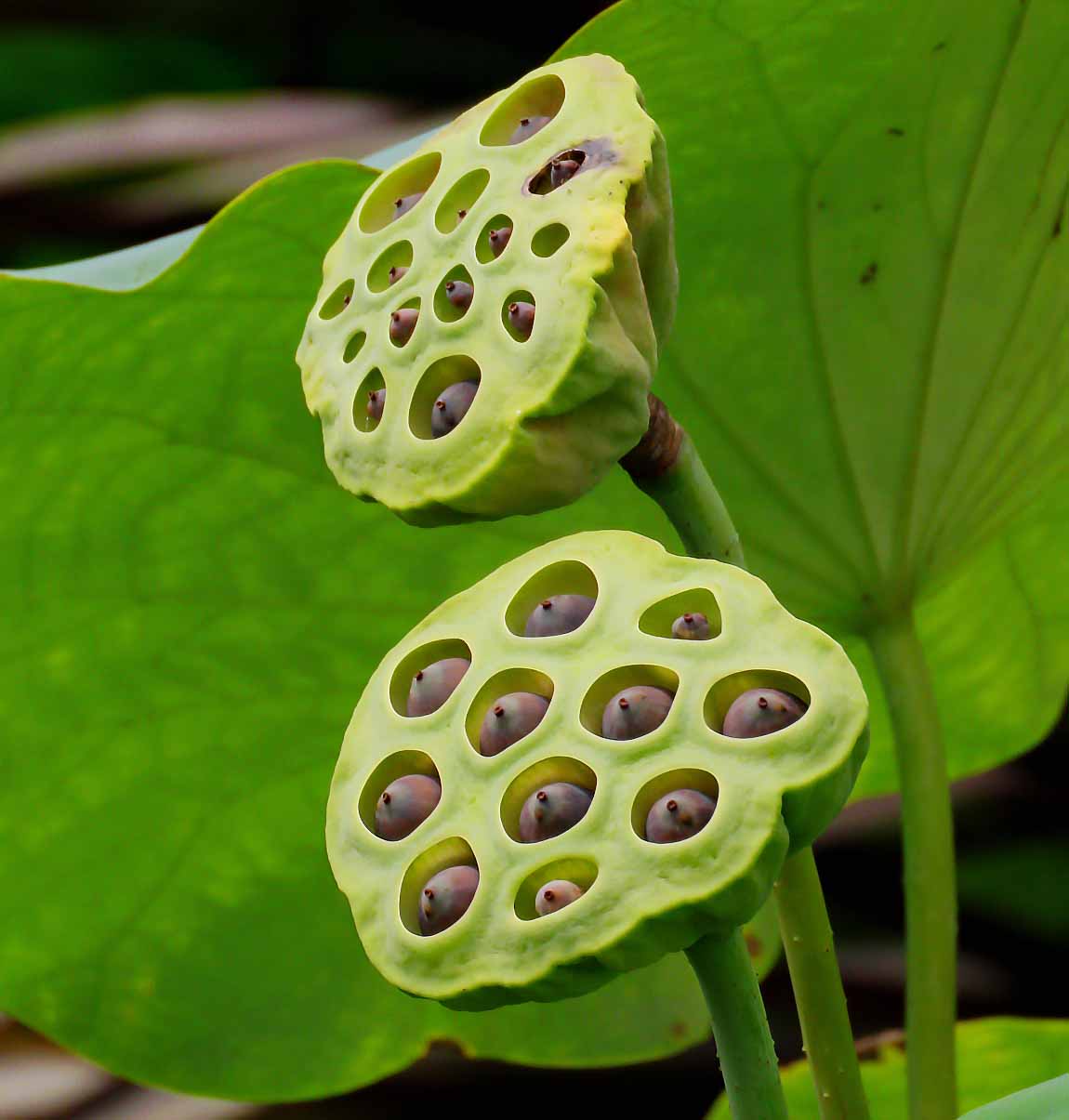Life Cycle
The lotus flower has four stages or parts within its life cycle:

Phase 1: Seed
- Begins from its small, black seeds.
- Uses the method of producing many seeds to ensure they have the best chance at germination.
- Typically germinate in mud at the bottom of water, which can take anywhere from 2 weeks to 2 months to begin.
Phase 2: Seedling
- Begins to produce leaves that rise to the water’s surface.
- The seedlings will grow into either tropical or marsh plants depending on their environment.
Phase 3: Flower
- Blooms for a few days, or just long enough for pollination to occur.
- The lotus flower produces heat that attracts beetles that feed on nectar; their main pollinator.
- Once all flowers have been pollinated, the petals begin to fall, and seed pods start to form.
Phase 4: Seed Pod
- Each seed pod contains hundreds of tiny seeds which will eventually be dispersed.
- The majority of lotus disperse their seeds through hydrophily; a process in which seeds are carried away and dispersed by the current of water, ensuring that offspring will have access to necessary water.